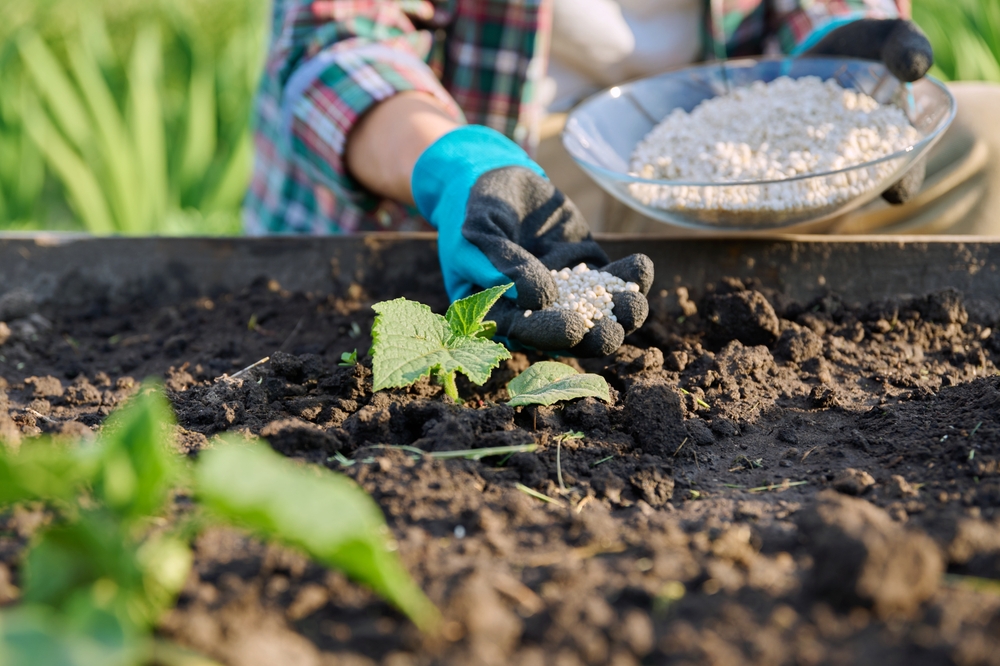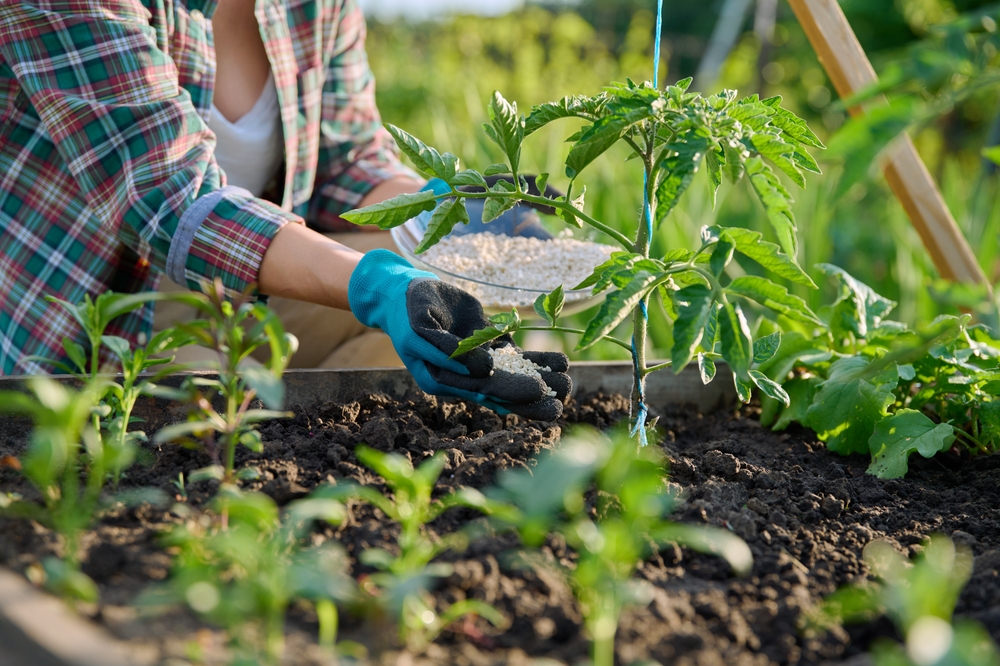
Image Source: Shutterstock.com
Think more fertilizer means stronger plants? Think again. Discover why over-fertilizing in fall actually kills more plants than it helps—and what your garden really needs instead.It starts with good intentions. You want your garden to look stunning before winter, so you grab the fertilizer and give your plants a little “boost” to help them along. But here’s the shocker—many gardeners accidentally sabotage their own landscapes right at the finish line. Fall is supposed to be about helping plants wind down gracefully, not sending them into overdrive. And yet, every autumn, more plants are quietly killed by too much love—specifically, too much fertilizer.
Let’s break down why your well-meaning fall feeding routine might actually be sending your plants to an early grave.
The Fall Fertilizer Myth
The myth goes like this: since plants are preparing for colder weather, they need extra nutrients to “stay strong.” It sounds logical, but it’s completely backward. During fall, most plants are naturally slowing their growth, storing energy, and getting ready to rest. Dumping heavy fertilizer into that process is like feeding an espresso shot to someone trying to fall asleep. The result? Stressed-out plants that can’t properly harden off before winter’s chill.
Fall fertilizer can actually trigger new, tender growth at precisely the wrong time. Those fresh green shoots may look healthy now, but when the first frost hits, they’re toast. Instead of thriving, your plants end up vulnerable and damaged—sometimes beyond recovery.
Roots Can’t Handle the Overload
Here’s the sneaky part: over-fertilization doesn’t always show up right away. Beneath the soil, your plant’s roots are quietly panicking. Too much fertilizer increases the salt concentration in the soil, drawing moisture out of the roots instead of into them. It’s a phenomenon called “fertilizer burn,” and it’s as nasty as it sounds.
When roots lose moisture, they shrivel and weaken, making it harder for the plant to absorb nutrients or water later on. By spring, the damage often shows as wilted, yellowed, or stunted growth—and most gardeners have no idea it traces back to their fall fertilizer binge. If your plants seem to “mysteriously” die over winter, chances are you fed them too well.
The Cold Weather Trap
Fall fertilizing feels productive because you can still see activity in your garden. Leaves are changing, perennials are holding strong, and lawns might even be growing slowly. But cold nights and shorter days are cues for plants to enter dormancy. Over-fertilizing disrupts that rhythm, pushing them to keep growing when they should be powering down.
The real kicker? Late-season fertilizer can actually delay dormancy, leaving plants exposed when frost hits. New tissue, rich with nutrients and moisture, freezes easily. Once damaged, these tissues can’t recover, and infections or rot often follow. In other words, the more you feed your plants now, the less likely they’ll survive later.
Fertilizer Doesn’t Fix Everything
Many gardeners see fertilizer as a magic cure-all for tired plants. Yellow leaves? Fertilize. Slow growth? Fertilize. Rough summer? Fertilize again! But plants don’t always need more nutrients—they often need better soil, proper watering, or recovery time. Over-fertilizing is like over-medicating: it doesn’t heal the root cause, and it often makes things worse.
When nutrients build up in the soil, they can actually block plants from taking in the ones they truly need. This leads to something called “nutrient imbalance,” where the soil is technically rich but functionally useless. It’s a cruel irony—your soil might test high in nutrients, but your plants still starve.

Image Source: Shutterstock.com
Lawns Suffer Too
Even your lawn isn’t safe from fertilizer overload. Homeowners often think fall is the time to “feed the grass” before winter, and while a light, slow-release feeding can help, too much can spell disaster. Over-fertilized lawns grow lush and green in late fall, but that soft new growth can’t withstand freezing temperatures. The result is brown patches, dead roots, and a sad yard come spring.
Excess fertilizer can also wash away in fall rains, seeping into storm drains and waterways. That’s bad news for the environment—and a waste of your hard-earned money. A smarter move is to use a low-nitrogen fertilizer early in the season, giving your lawn time to absorb it before dormancy kicks in.
What Your Plants Actually Want in Fall
Here’s the truth your garden wishes you knew: fall is for recovery, not growth. Instead of loading up on fertilizer, focus on helping your plants rest and prepare for winter. Compost and mulch are far better options this time of year—they enrich the soil gently and protect roots from temperature swings.
Think of compost as a cozy blanket for your plants. It adds organic matter slowly, improves soil structure, and boosts microbes that keep roots healthy. Mulch, on the other hand, insulates and locks in moisture, helping plants stay stable through the cold. It’s the plant equivalent of a warm, nutritious soup—comforting, not caffeinating.
How to Spot an Over-Fertilized Plant
If your plants are struggling and you suspect fertilizer might be the culprit, look for these telltale signs. Leaves may turn yellow or brown at the edges, curl under, or fall off early. You might notice white crusts forming on the soil surface—a residue of unused salts. Growth can slow dramatically, or worse, stop altogether.
These symptoms don’t always appear right away, which makes them tricky to diagnose. The best way to confirm? Do a soil test. If nutrient levels are sky-high, stop fertilizing immediately and flush the soil with water to help wash away excess salts. Recovery can take time, but most plants will bounce back once you restore balance.
Timing Is Everything
If you’re determined to fertilize in fall, timing is everything. Early fall—think late August or early September—is the sweet spot. That gives plants time to use the nutrients before dormancy kicks in. Once nighttime temperatures consistently drop, it’s time to stop. Feeding beyond that point does more harm than good.
The key is understanding your plants’ natural rhythm. Trees, shrubs, and perennials all follow a seasonal cycle that can’t be rushed or forced. Fertilizer should support that cycle, not override it. When in doubt, feed less, not more—your plants will thank you in spring.
Let Your Garden Rest
Over-fertilizing in fall is like giving your plants a jolt of energy when they’re begging for a nap. It might look productive, but it sets them up for stress, weakness, and winter damage. Understanding when and how to fertilize is the real secret to a thriving landscape—not constant feeding.
So this fall, step away from the fertilizer bag and give your garden the gift of rest. Compost, mulch, and a little patience go further than any quick fix ever could.
Have you ever accidentally overfed your plants before winter? Share your stories, lessons, or gardening triumphs in the comments below.
You May Also Like…
The Role of Fungi in Breaking Down Fall Leaves
9 Organic Fertilizers That Work Best in Cooler Soil
11 Trees With Leaves Worth Collecting for Mulch
10 Flowers to Deadhead for Extra Fall Blooms
12 Garden Chores You Can’t Skip in November
Leave a Reply